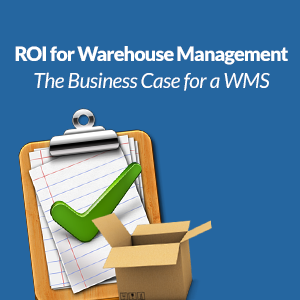Inventory Management: Taking Stock of Optimization Technology
Inventory optimization technology can lower costs, make you more efficient across all business units, while improving responsiveness to immediate and projected customer needs. But inventory optimization is more than a way of streamlining operations – it’s about making inventory a genuine profit center, and giving you a key competitive differentiator. There are a number of things to consider in selecting and implementing the optimization platform that’s right for your organization.
Companies measure the effectiveness of inventory controls by 1) how successful they are at reducing inventory investment, 2) whether they’re meeting customer service goals, and 3) to what extent they’re achieving maximum throughput and cost containment.
Inventory control and management still boils down to balancing your customer’s needs with stocking the minimum inventory possible. Because inventory is the backbone of your sales and production processes, it’s important to stock just enough of it to avoid the opportunity costs of lost sales and diminished customer satisfaction and loyalty. As you know, inventory is expensive, as it exacts carrying costs in the way of taxes, insurance, security and storage; inventory can also tie down working capital that impose “opportunity costs.”
In a 2012 survey of supply chain professionals conducted by the Aberdeen Research Group, 60% cited reducing inventory costs as their top priority, with 42% citing improving customer service levels as a top priority.
Inventory optimization technologies
New technologies have emerged to automate supply chain inventory controls. These technologies efficiently classify stocking levels (buffer, replenishment, overage) derived from past demand, augment supplier management based upon past supplier performance, and, using “big data,” detect even subtle changes in consumer/inventory patterns for more precise forecasting.
Modern inventory optimization systems integrate with the existing ERP system, allowing you to get real-time inventory snapshots synthesized and graphed from multiple business units or departments. Such systems allow you to identify and diagnose granular changes in demand and, as previously stated, glean larger consumer patterns to better forecast scheduling to restock or re-price specific items, better predict sales cycles, and establish thresholds per item for automated ordering and replenishment.
Finely Tuned Inventory Management
According to a recent WSJ.com report, “The best supply organizations deploy sophisticated analytical tools to reduce inventory levels by 20 to 50 percent, resulting in savings for years.”
Inventory optimization technology goes well beyond logistics and the stocking/restocking of goods. Today’s technology can process “big data” and yield deep insights into customer behavior, determine what’s driving it and how to most efficiently and cost-effectively serve their needs…indeed, even anticipating these needs.
Put simply, the right optimization platform can significantly cut costs, enhance operational efficiencies across all business units, and make your organization more responsive to immediate and projected customer needs, while improving overall competitiveness and profitability.
 Recorded Webinar:
Recorded Webinar:
Join supply chain visionary, Chris Barnes, as he reviews the importance of having a Warehouse Management System (WMS), and how it is no longer an option for many companies, but a means of survival. Supply Chain Event Management (SCEM) manages and monitors many methods and activities, which means a greater need for WMS that can provide real-time activity tracking and inventory visibility.




